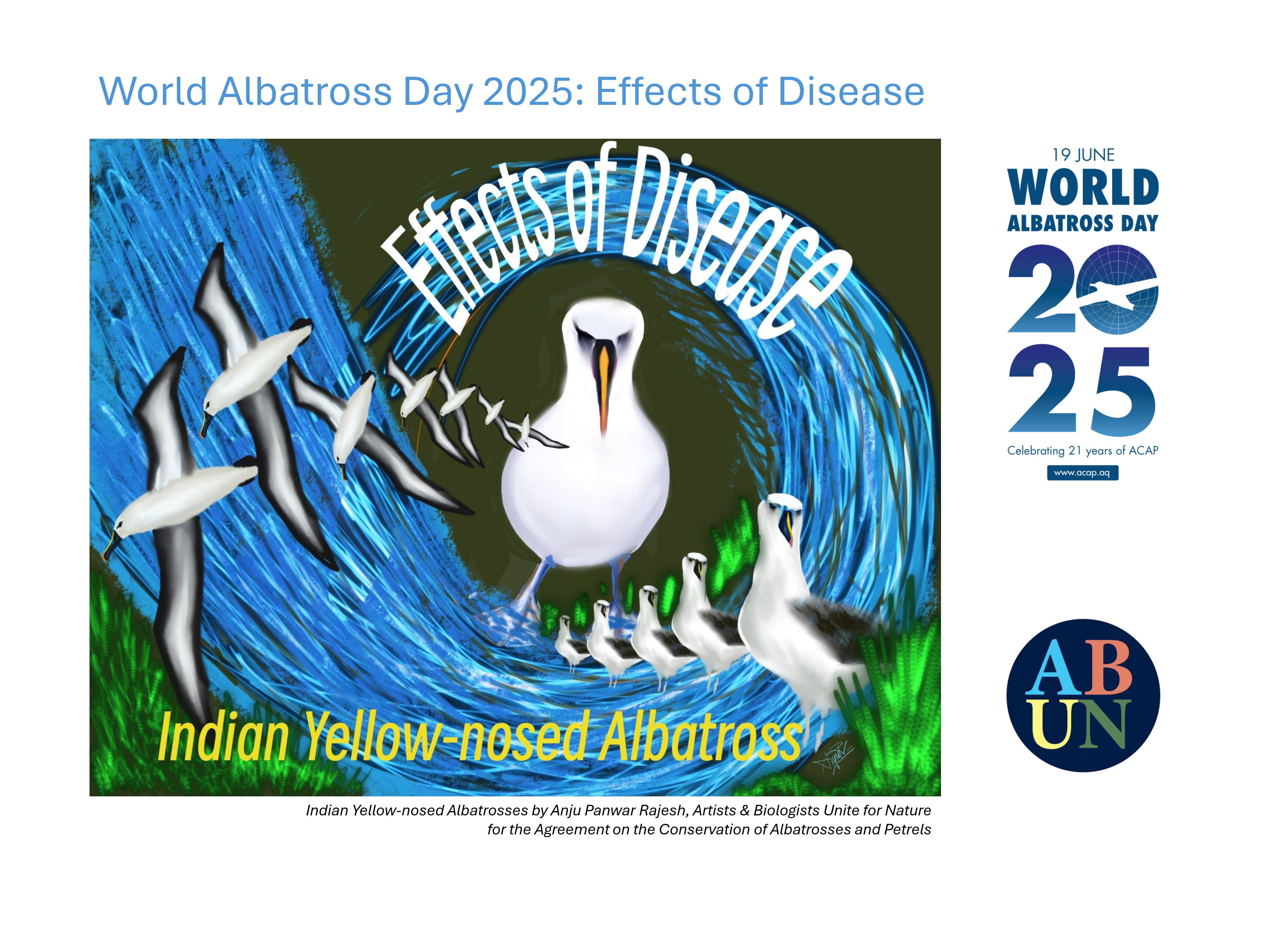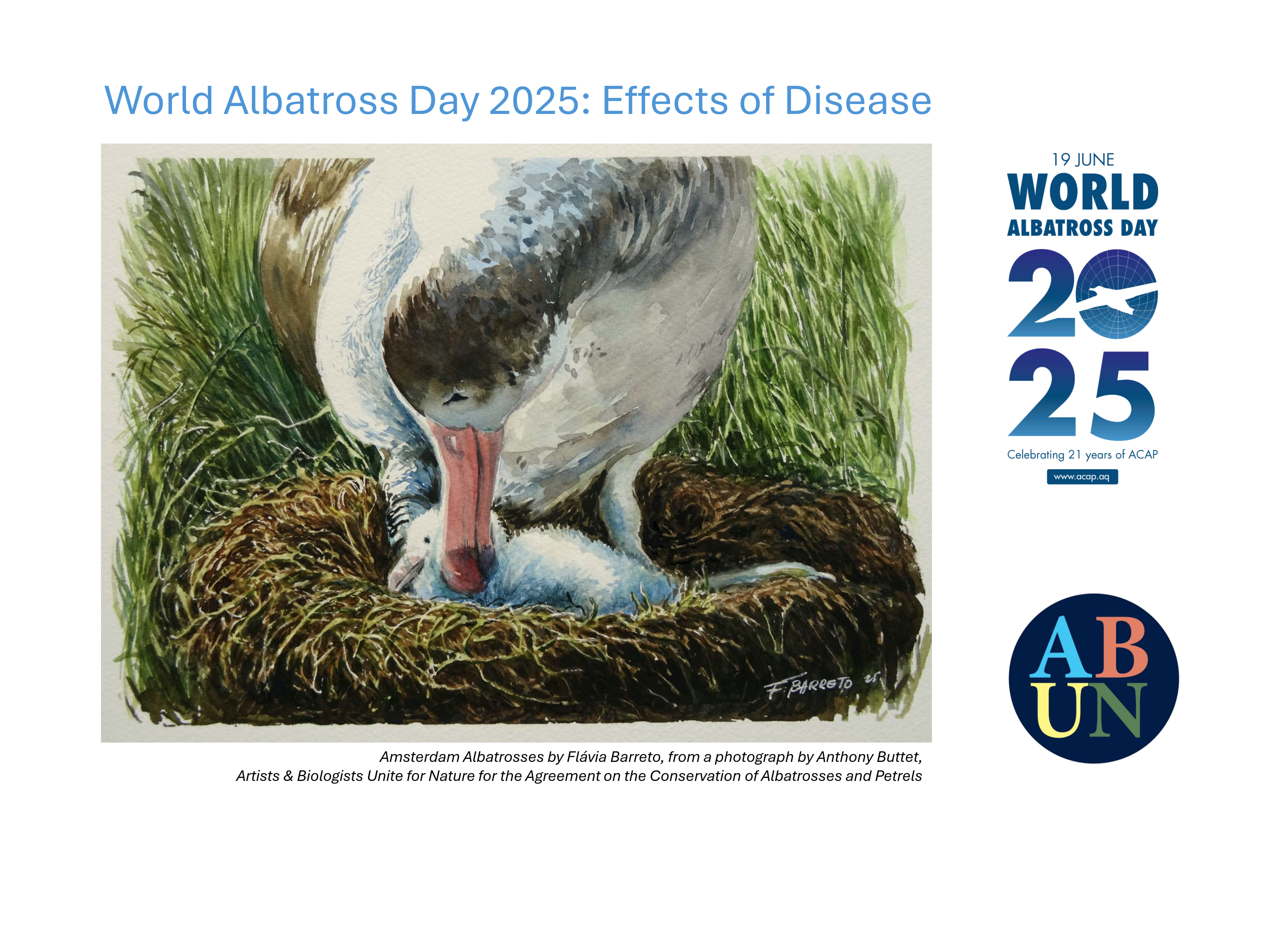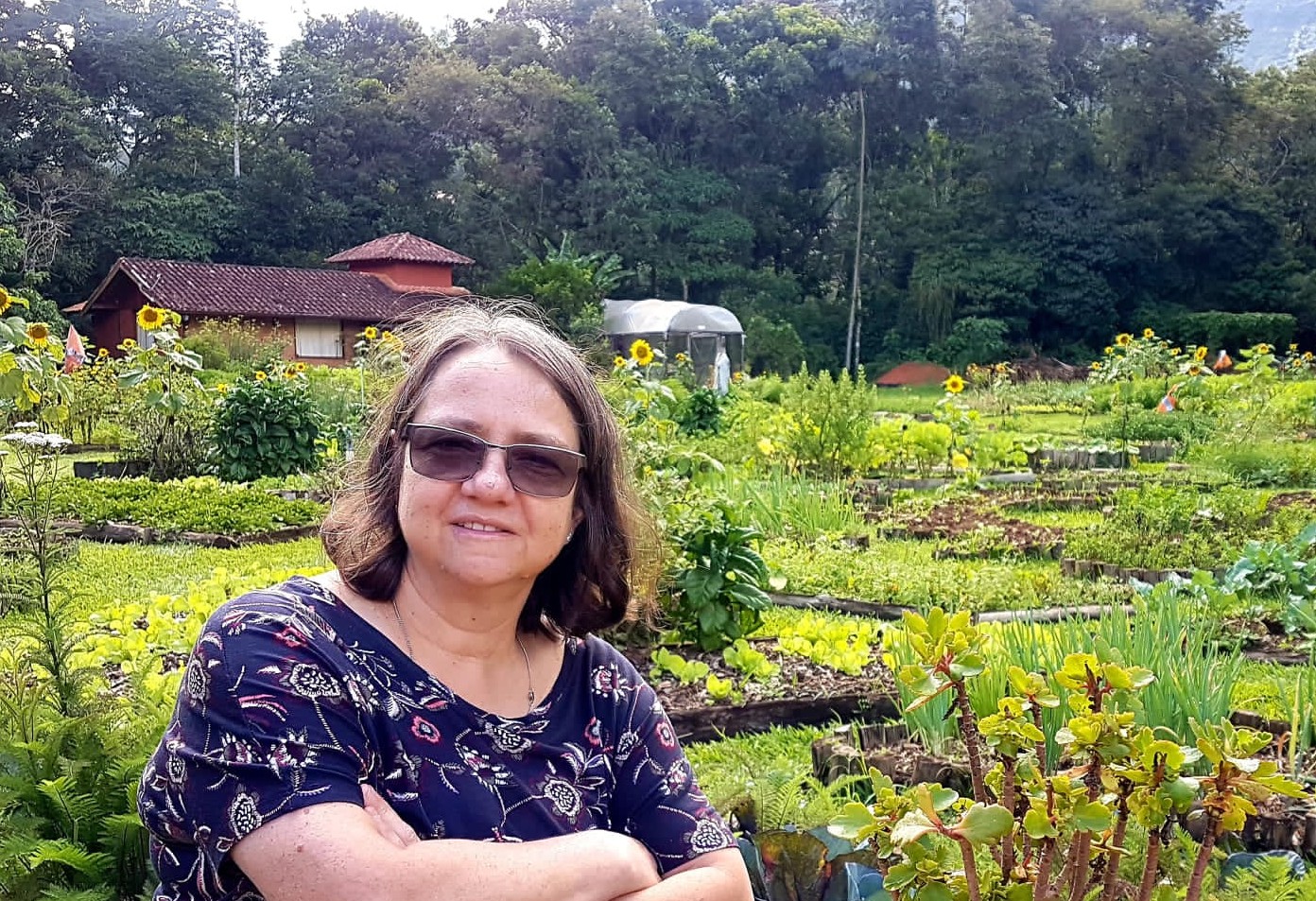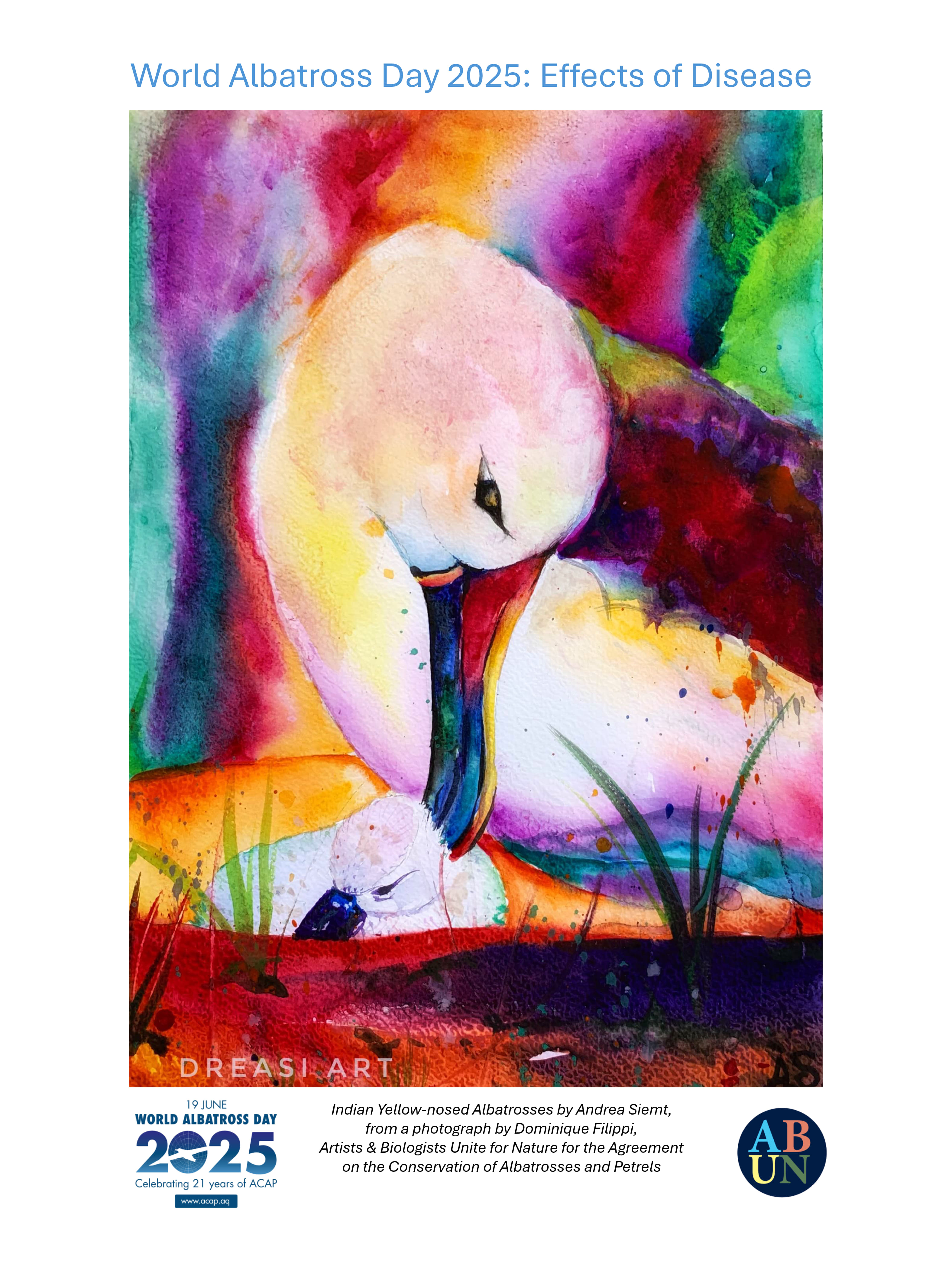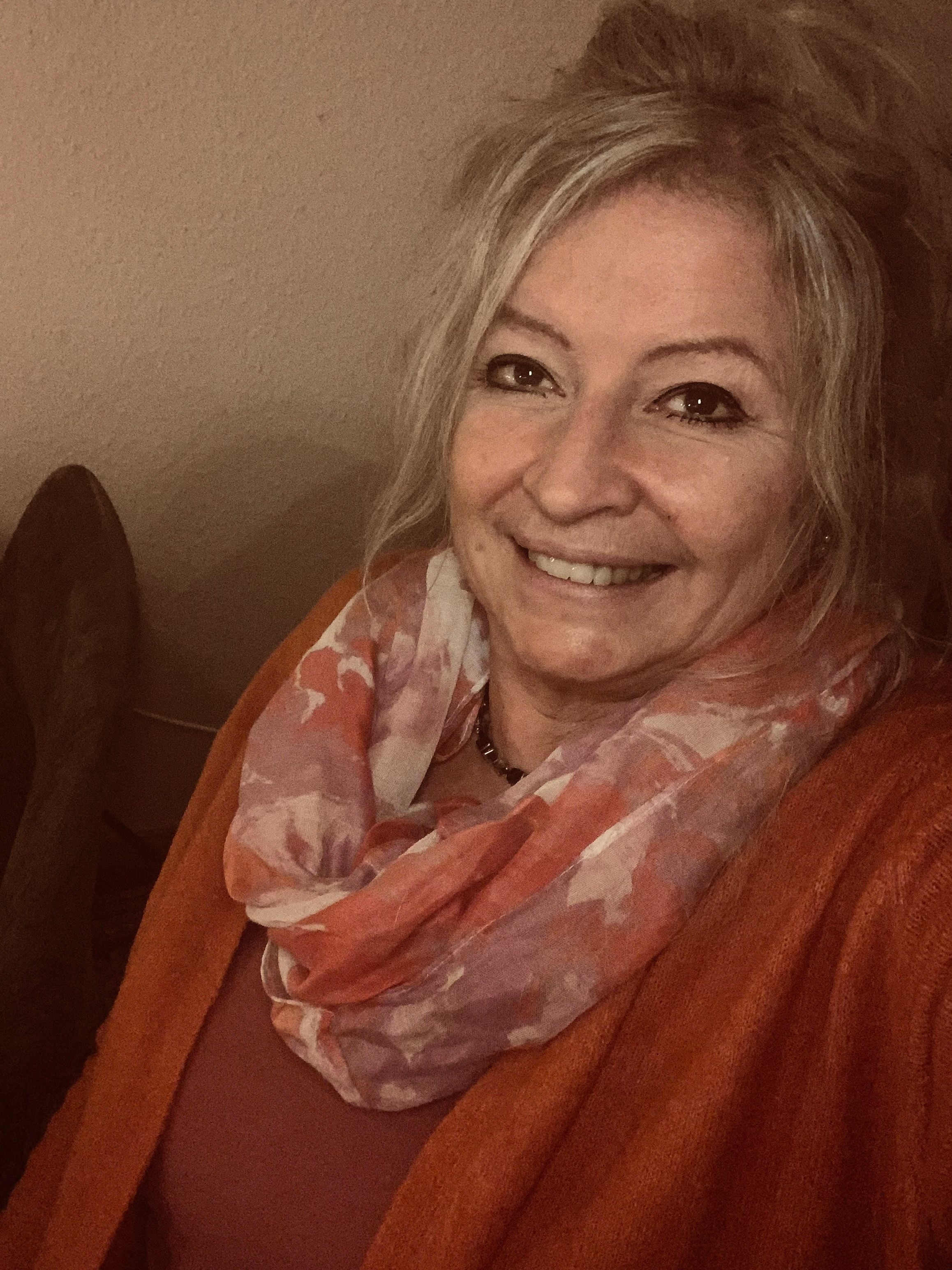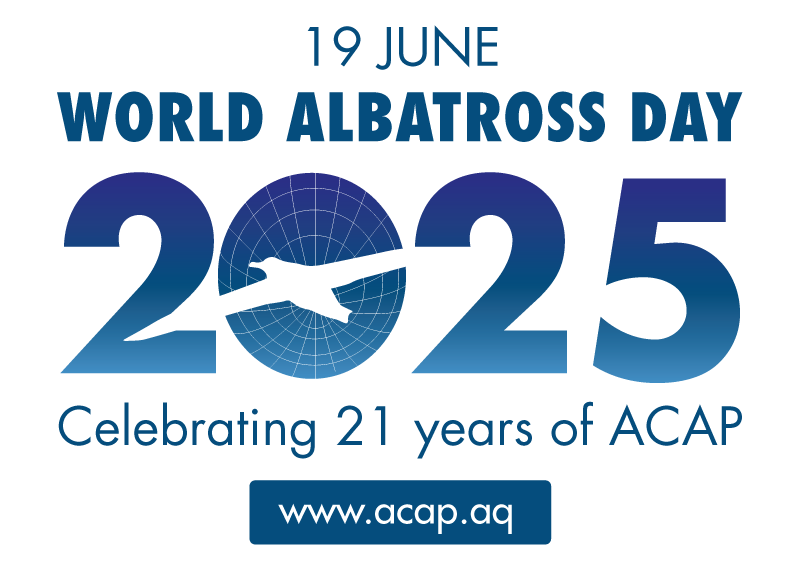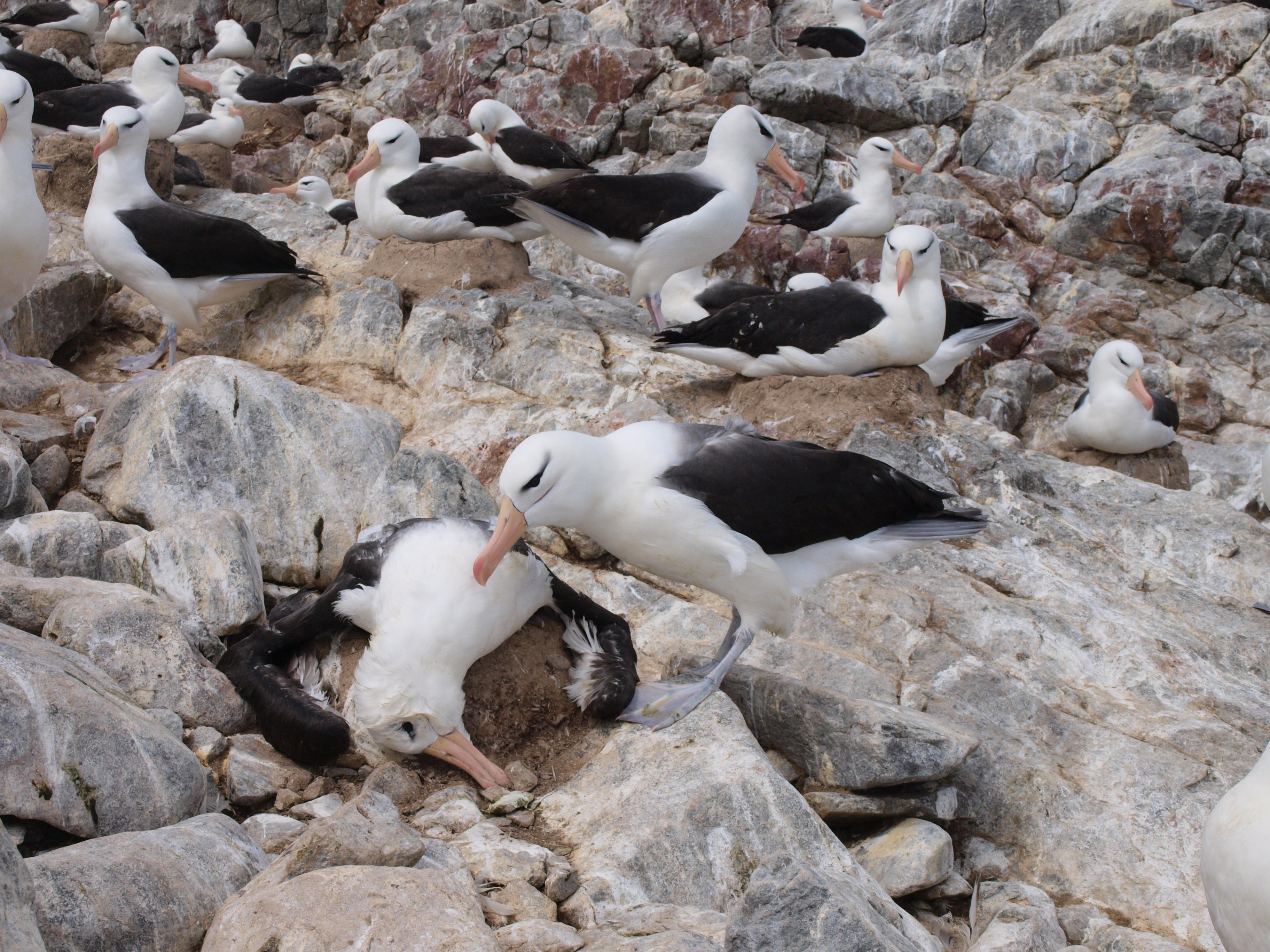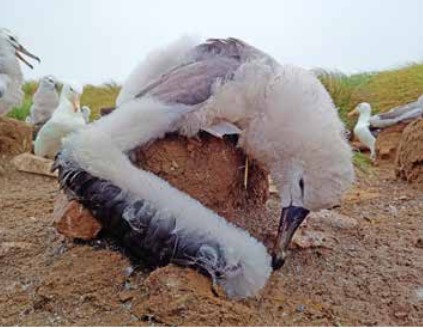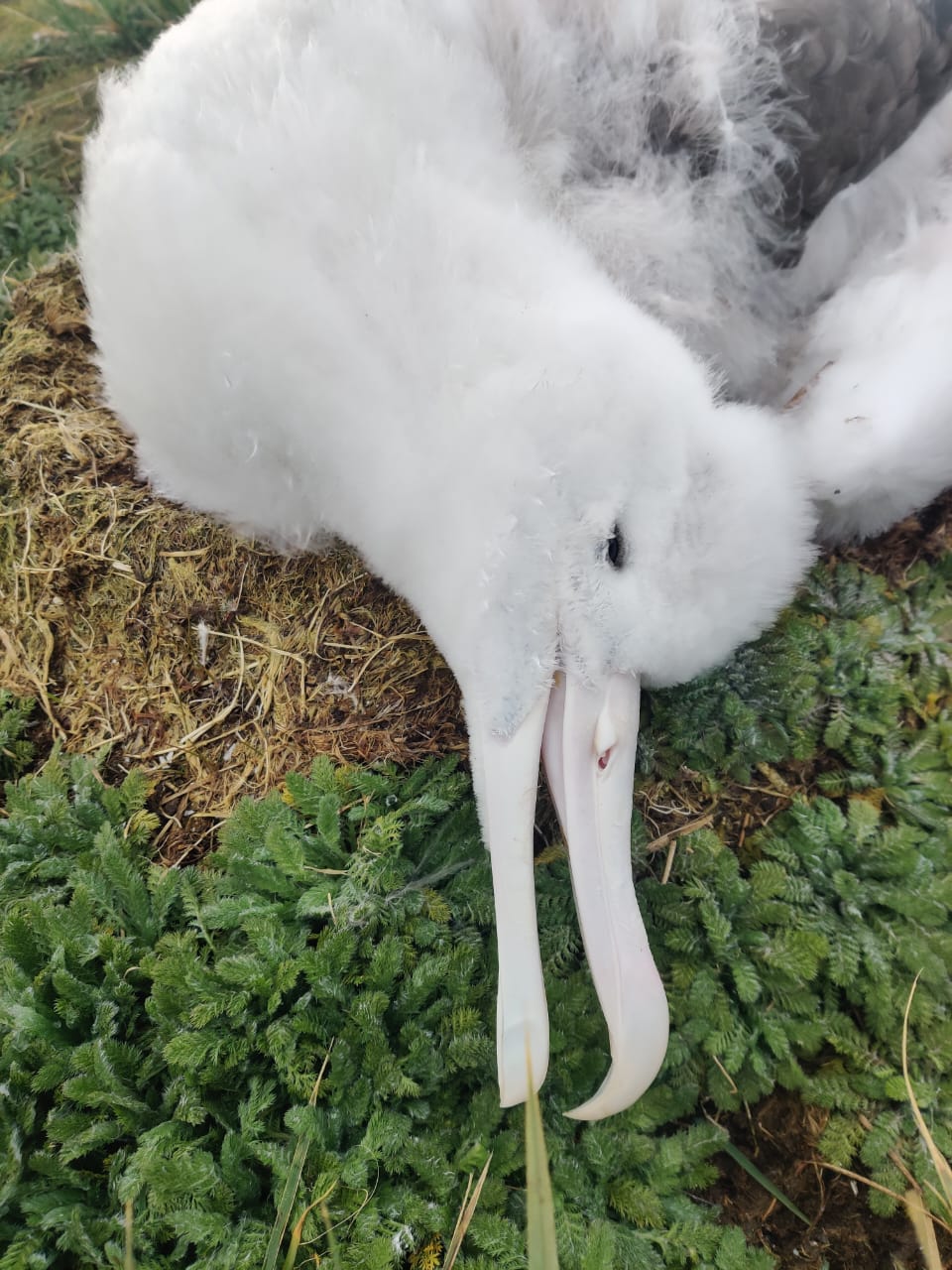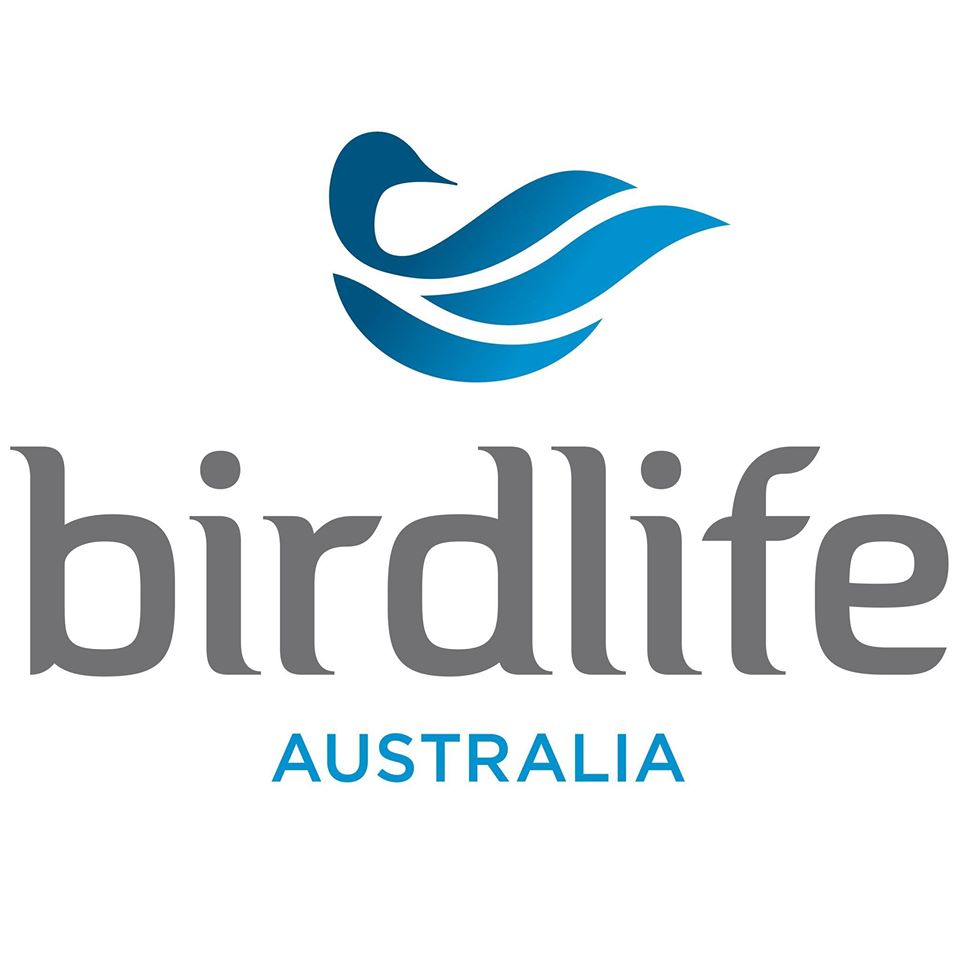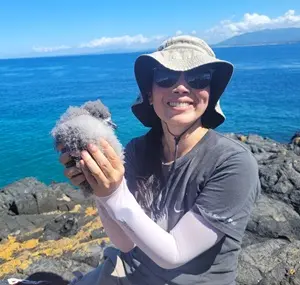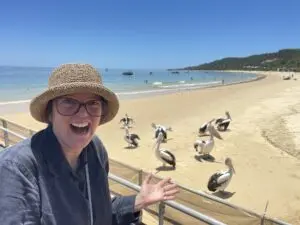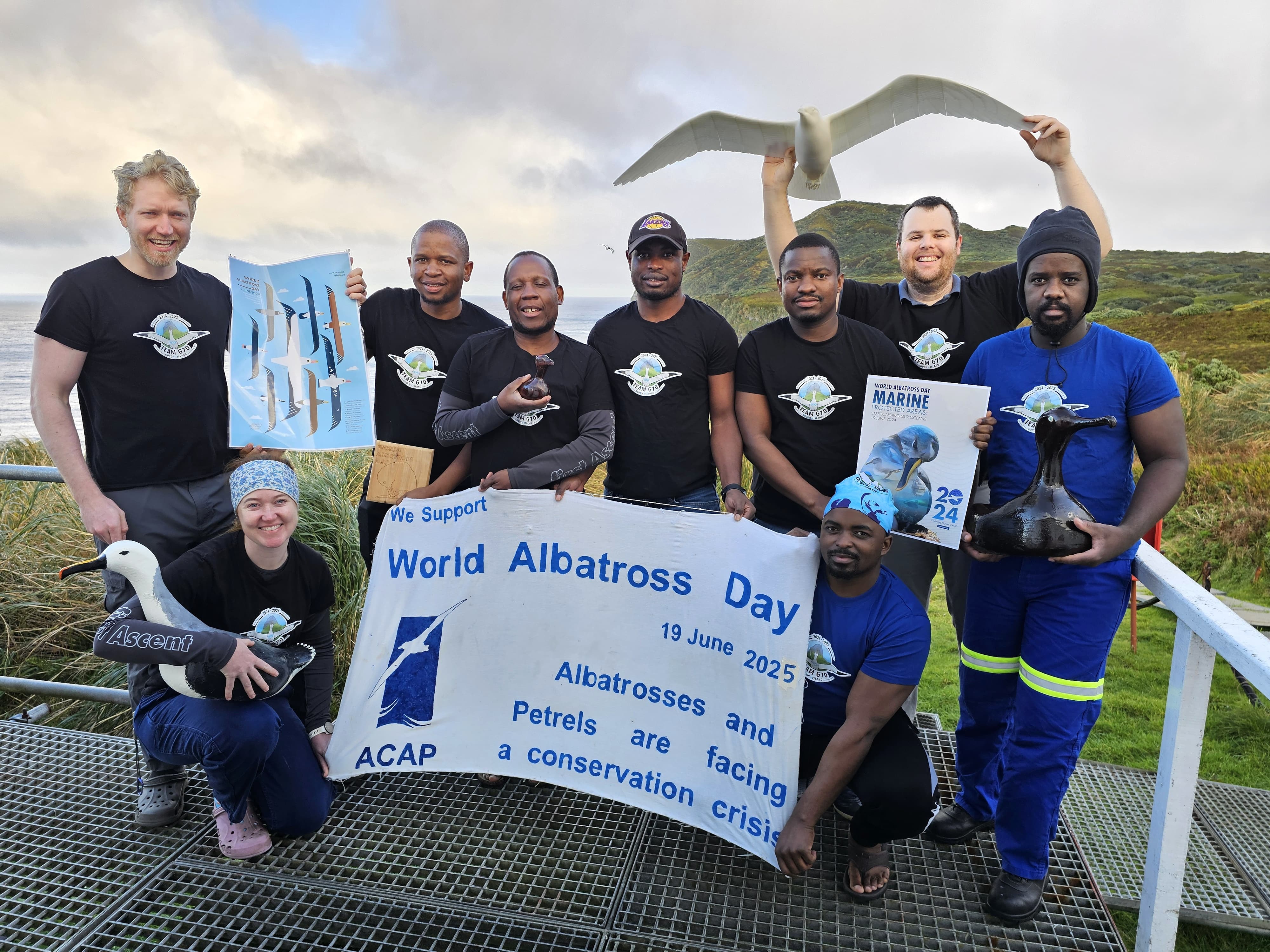 The 2024/25 Overwintering Team (G70) on Gough Island with their World Albatross Day banner. Michelle Risi (front, left) holds a wooden model of an Atlantic Yellow-nosed Albatross made by Kabelo Moabi (G64)
The 2024/25 Overwintering Team (G70) on Gough Island with their World Albatross Day banner. Michelle Risi (front, left) holds a wooden model of an Atlantic Yellow-nosed Albatross made by Kabelo Moabi (G64)
Today, the 19th of June, is World Albatross Day, the sixth to be held. It is also the seventh and final day of news articles under the heading ‘WADWEEK' that have been posted to ACAP Latest News.
In May 2019 ACAP's Advisory Committee at its Eleventh Meeting (AC11) held in Brazil declared that a conservation crisis continues to be faced by its 31 listed species, with thousands of albatrosses, petrels and shearwaters dying every year as a result of fisheries operations. To increase awareness of this crisis ACAP inaugurated a World Albatross Day (WAD), to be held annually from 2020 on 19 June, the date the Agreement was signed in 2001. Each year ACAP has chosen a theme to mark the day. The inaugural theme was “Eradicating Island Pests”. “Ensuring Albatross-friendly Fisheries” followed in 2021, then came “Climate Change” in 2022, “Plastic Pollution” in 2023 and "Marine Protected Areas” in 2024. This year’s theme for ‘WAD2025’ is “Effects of Disease”, which takes especial note of the arrival of the Highly Pathogenicity Avian Influenza (HPAI) H5N1 virus on several sub-Antarctic islands in the Southern Ocean.
The idea of ACAP holding a World Albatross Day was first proposed by Michelle Risi, a long-term supporter of the Agreement with her photographs of ACAP-listed species on Gough and Marion Islands and WAD banners, posters and ‘albicakes’. Michelle and her husband, Chis Jones are now conducting research on Gough Island in the South Atlantic. Fittingly, Michelle is the first to report a World Albatross Day event to ACAP this year, posing with a hand-made banner along with her fellow team members on the island.
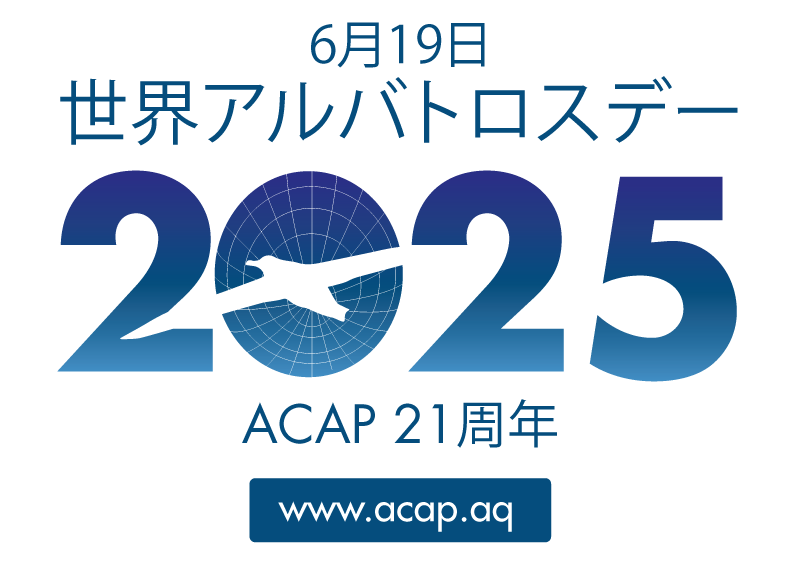 This year the World Albatross Day logo was produced in Japanese, as well as in the three official ACAP languages of English, French and Spanish
This year the World Albatross Day logo was produced in Japanese, as well as in the three official ACAP languages of English, French and Spanish
As in recent years two albatross species have been utilized to feature the theme with new infographics, artworks and posters. They are the Endangered Amsterdam Albatross Diomedea amsterdamensis, endemic to France’s Amsterdam Island, and the Endangered Indian Yellow-nosed Albatross Thalassarche carteri, that breeds on islands in the southern Indian Ocean. In addition, logos and a media release have been produced, each in four languages.
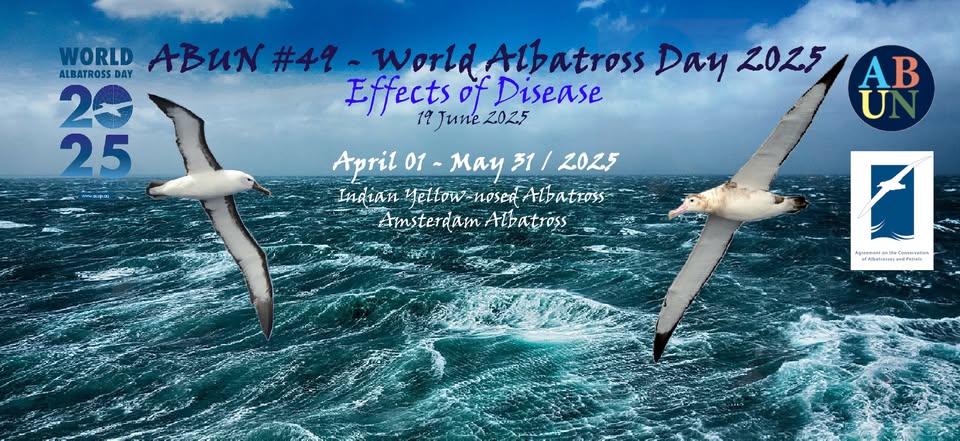 For the sixth year, ACAP has collaborated with Artists & Biologists Unite for Nature (ABUN) on Project #49, resulting in 37 artworks by 24 artists. Eight works have been chosen to make downloadable art posters
For the sixth year, ACAP has collaborated with Artists & Biologists Unite for Nature (ABUN) on Project #49, resulting in 37 artworks by 24 artists. Eight works have been chosen to make downloadable art posters
The seventh art poster to be released is illustrated by Flávia Barreto of Nova Friburgo, Brazil. Flávia is no stranger to ACAP, having produced artworks for all the World Albatross Days since 2022. This year she has painted five artworks for Project #49, two of which have been made into posters. Her second poster, shown here, is of a fledgling Indian Yellow-nosed Albatross seen on Marion Island – where the species does not breed.
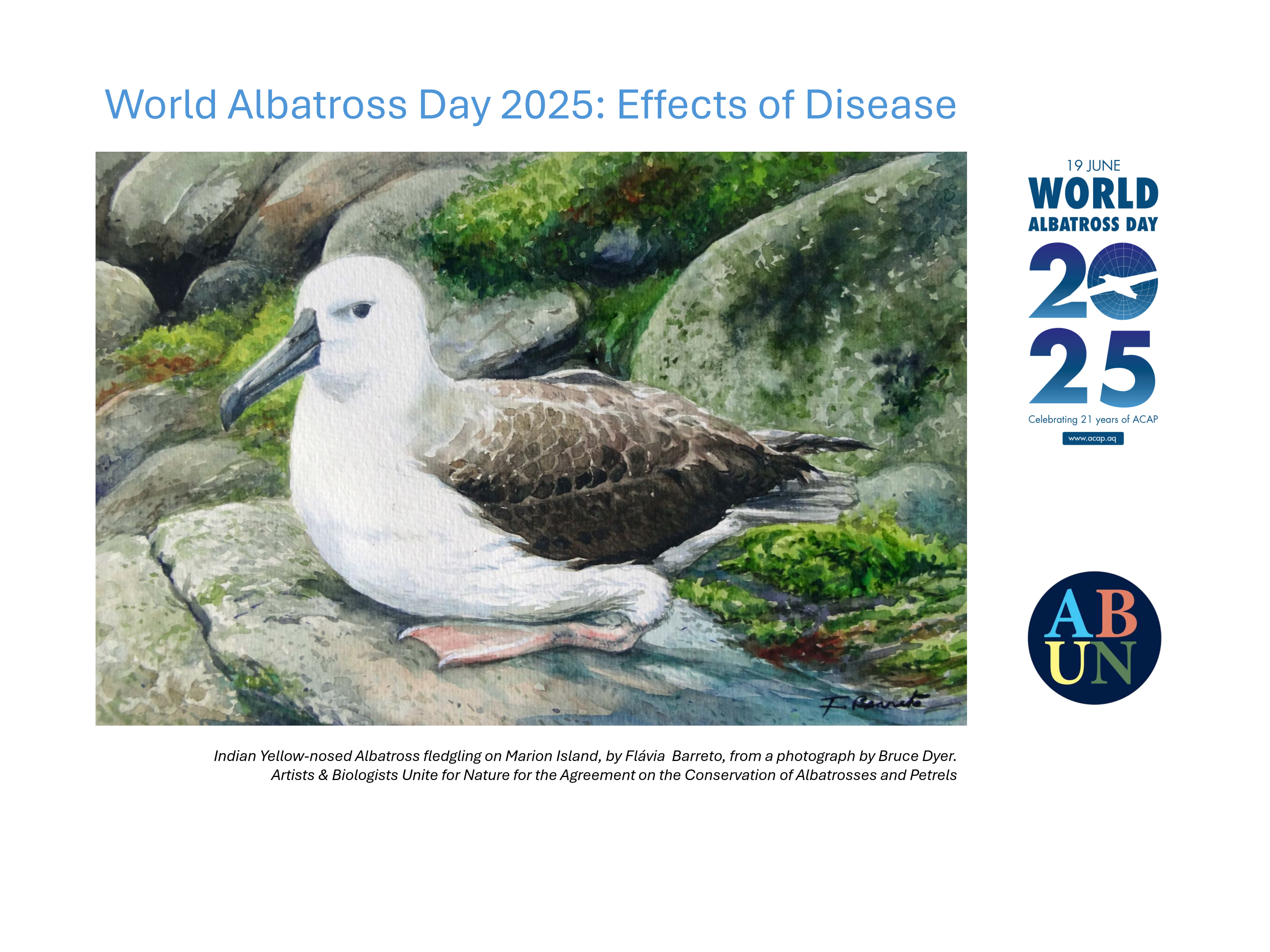
From next week, ACAP Latest News will report on WAD2025 activities and events held around the world today and over the weekend. These include an exhibition in Japan, a webinar and a music video in Australia, free entry to an albatross colony in New Zealand, a beach clean-up in Hawaii, a midwinter party in South Africa, another banner on Marion Island, and efforts to raise awareness and funds for the Saving Marion Island’s Seabirds: The Mouse-Free Marion Project in Australia, South Africa and the USA. Not to mention a couple of ‘albicakes'! Do let ACAP know of any other events, along with a few words and photographs, so they may also be featured here.
John Cooper, Emeritus Information Officer, Agreement on the Conservation of Albatrosses and Petrels, 19 June 2025

 English
English  Français
Français  Español
Español 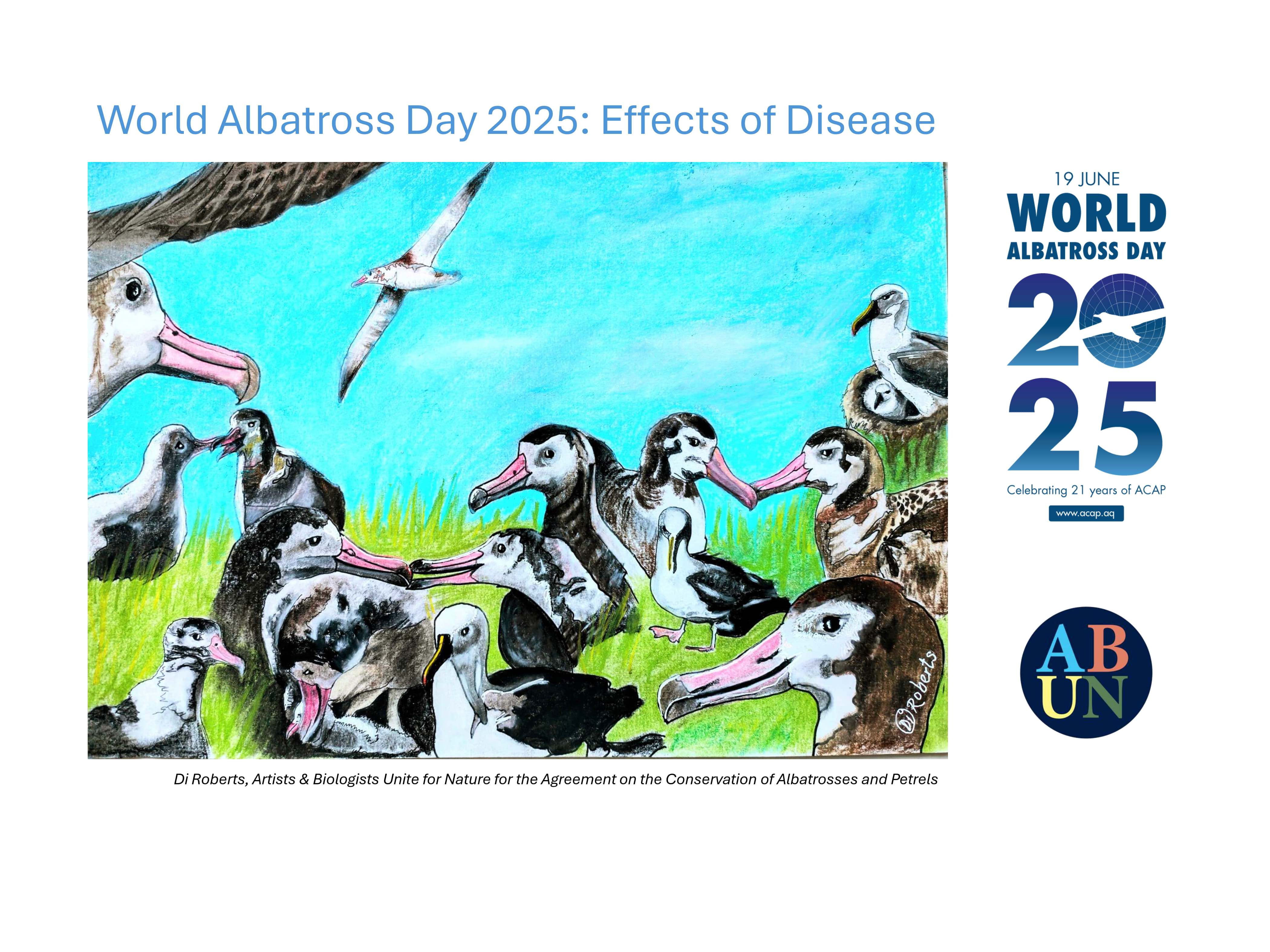
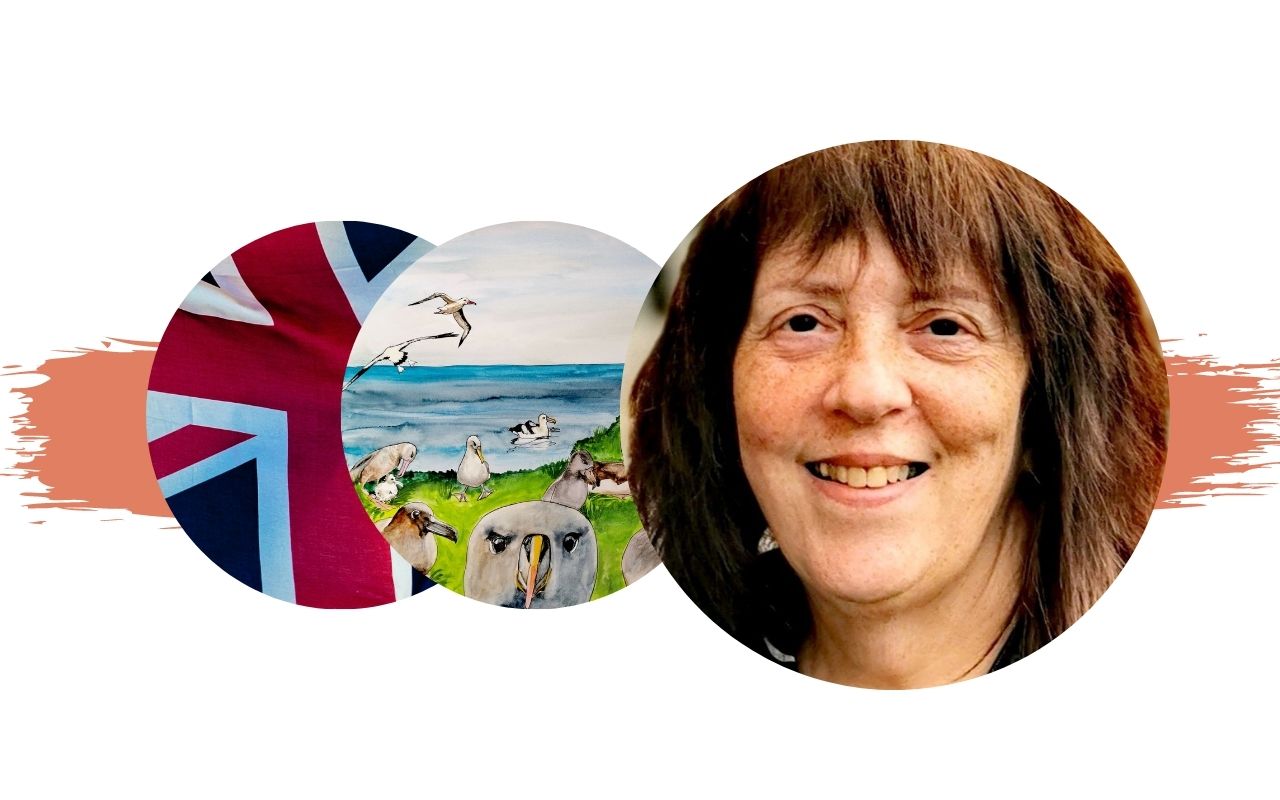 Di Roberts
Di Roberts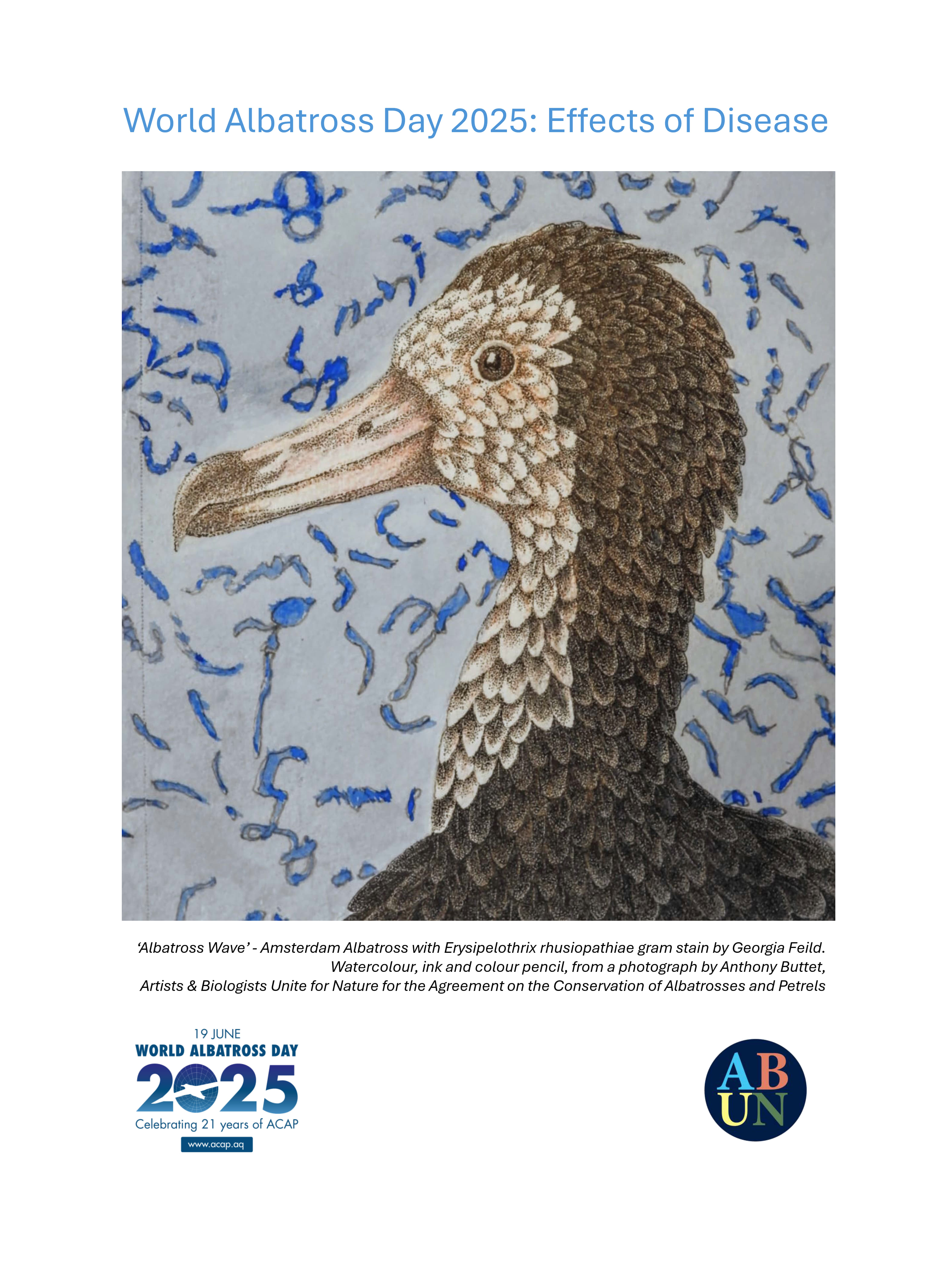
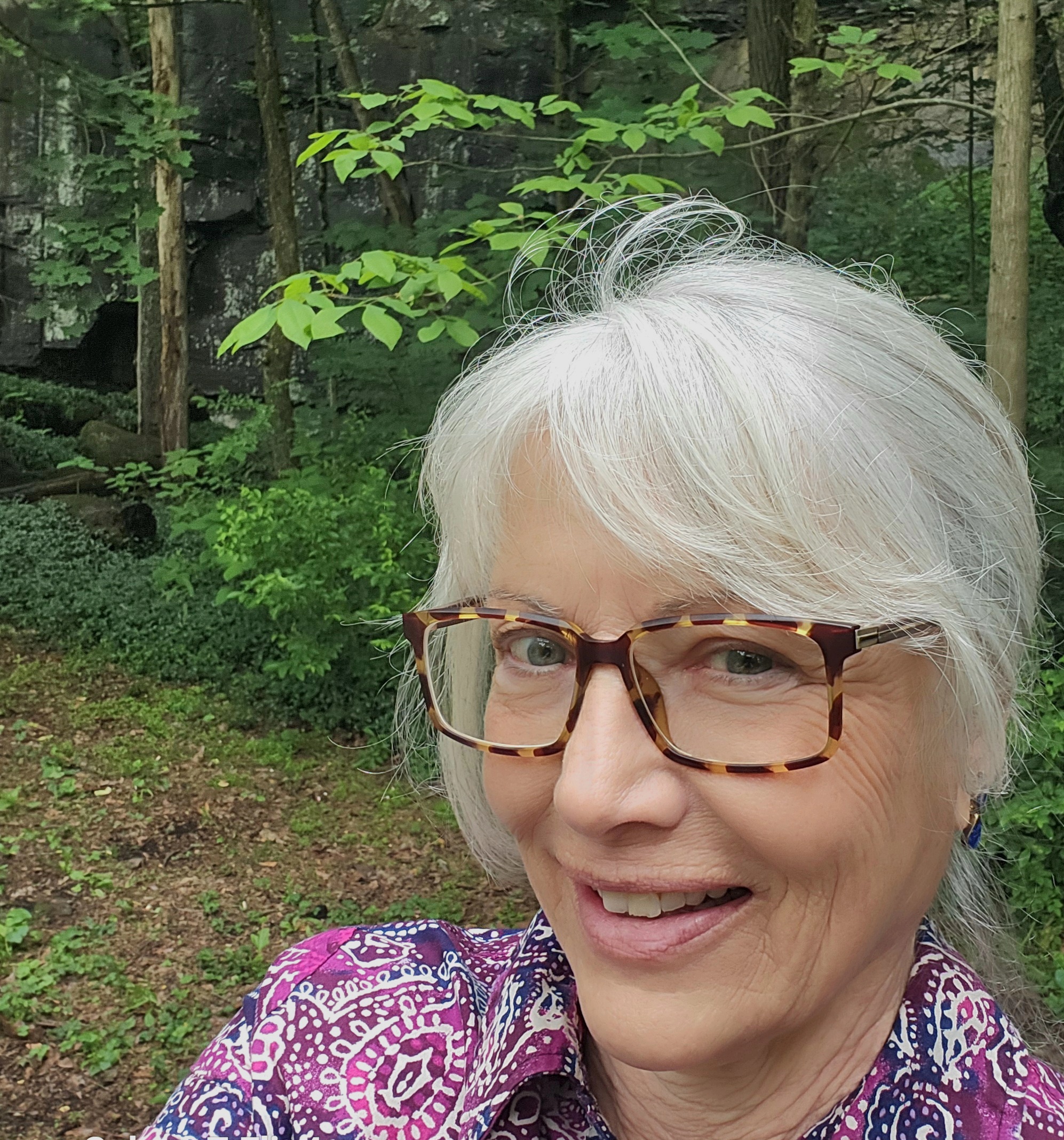 Georgia Feild
Georgia Feild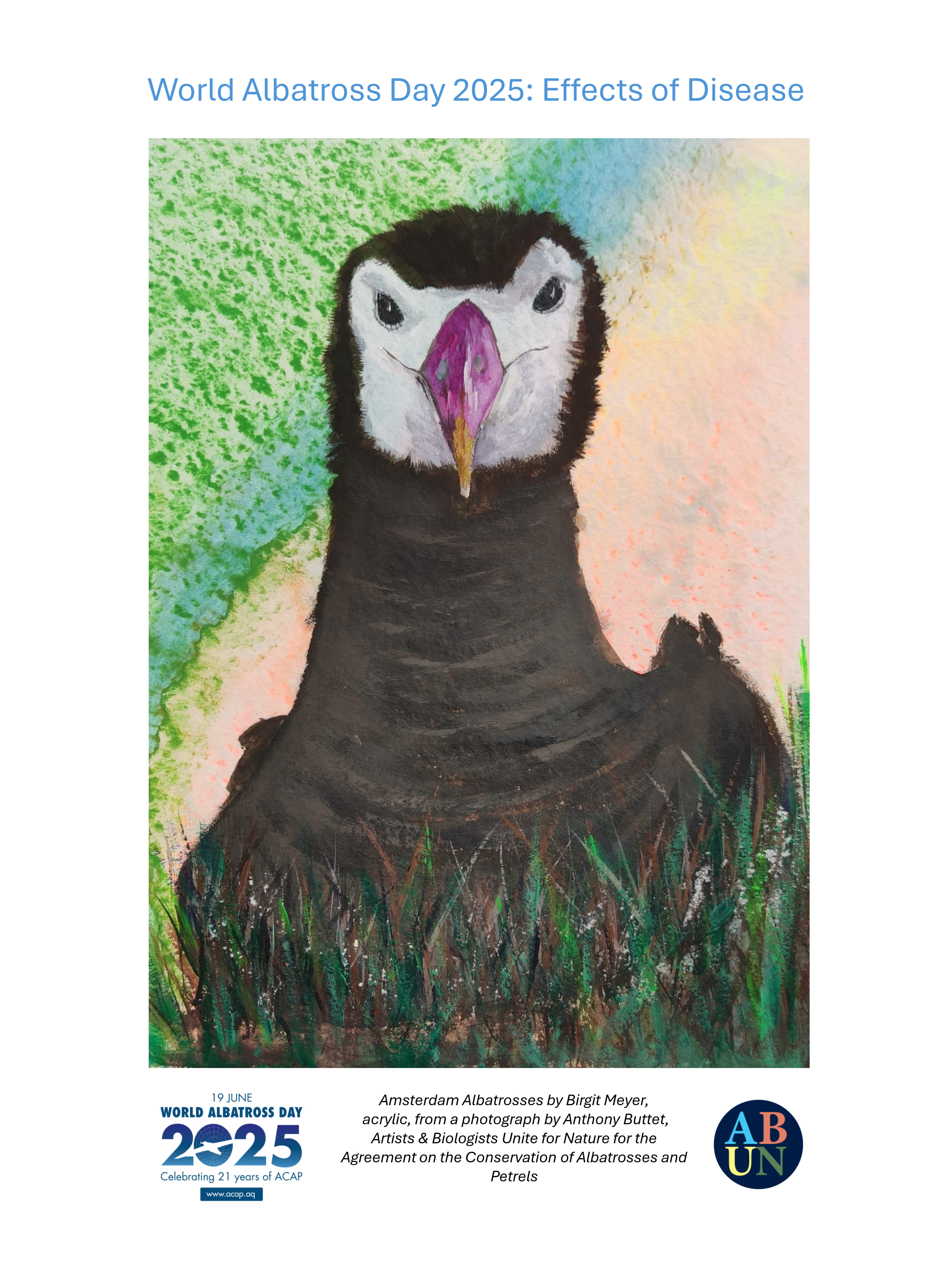
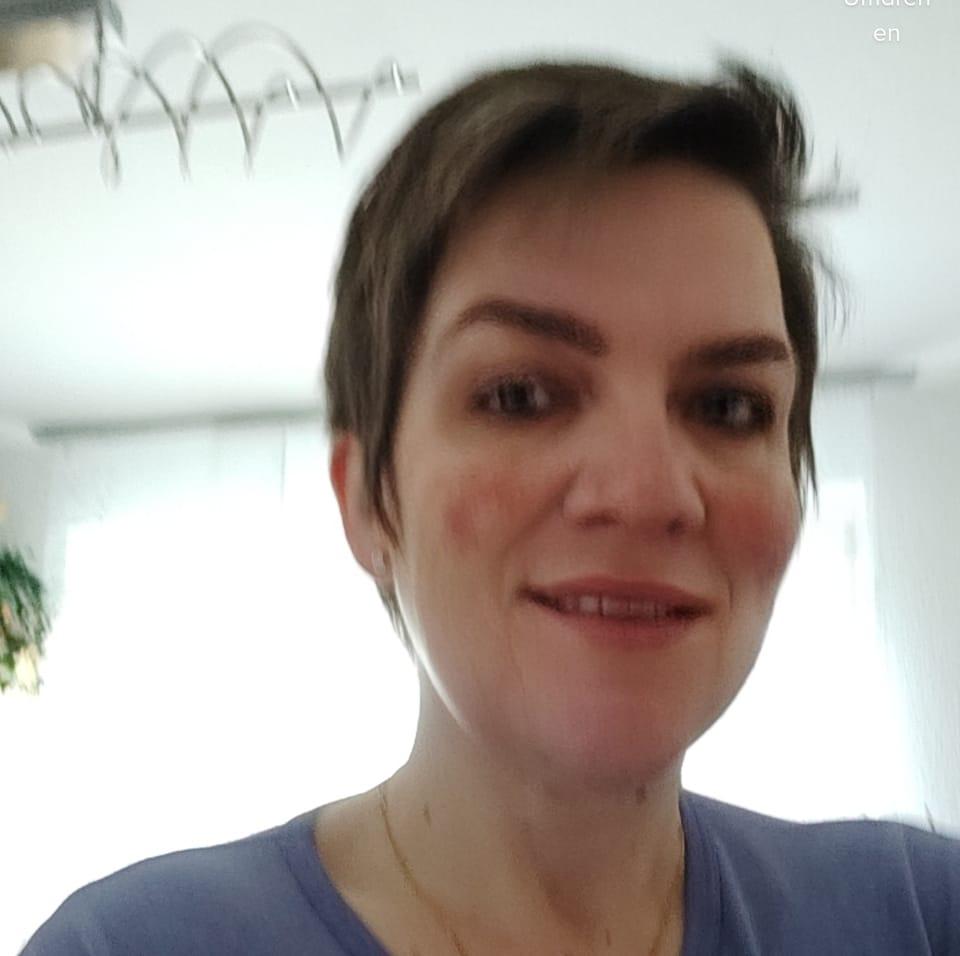 Birgit Meyer
Birgit Meyer